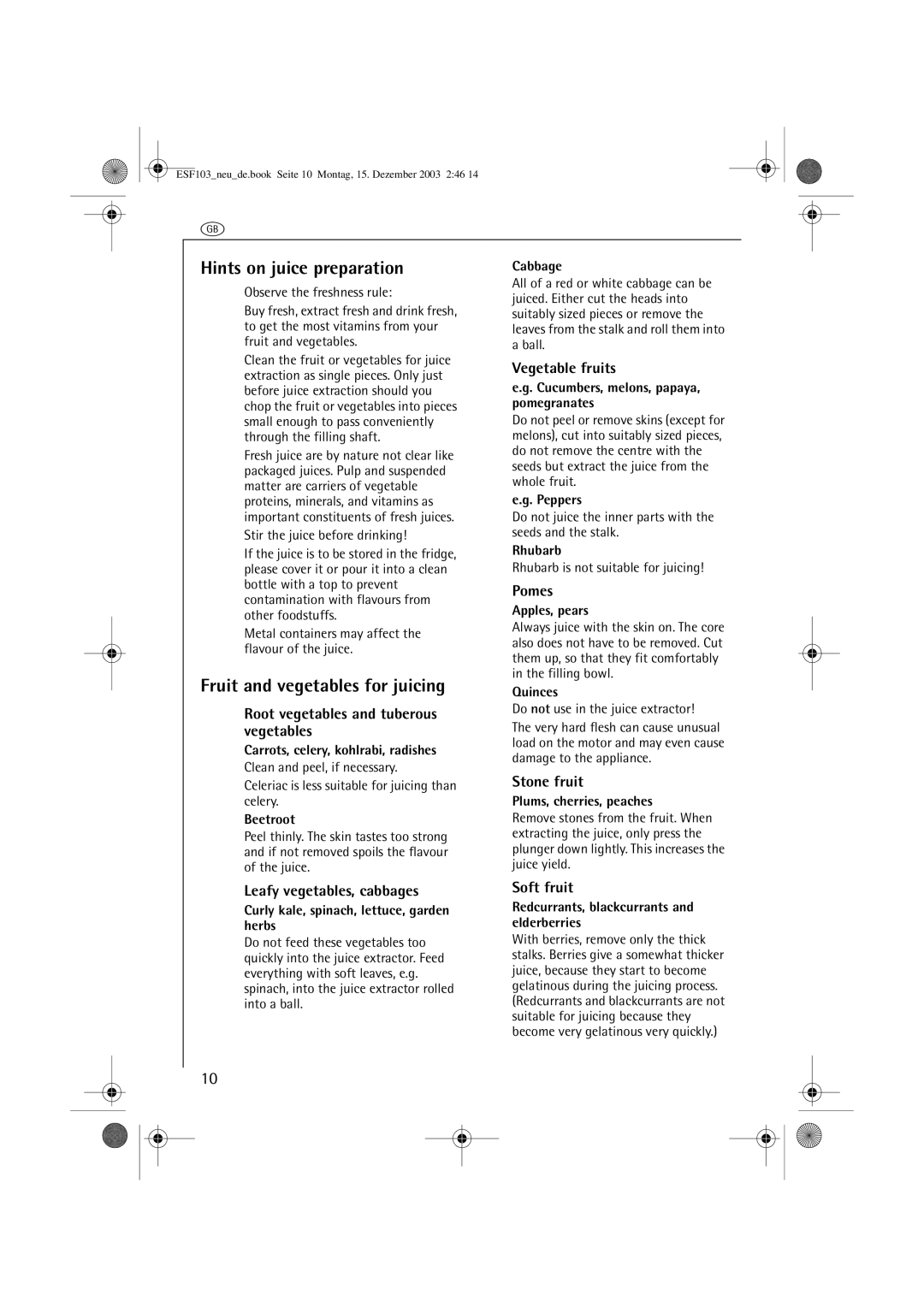ESF 103.1 specifications
The AEG ESF 103.1 is a high-performance dishwasher that combines efficiency with stylish design, making it a popular choice among homeowners seeking reliable kitchen appliances. This model is particularly well-regarded for its advanced features, exceptional cleaning capabilities, and energy-efficient operation.One of the standout characteristics of the AEG ESF 103.1 is its impressive energy efficiency rating. It operates within a low energy consumption range, helping users save on their electricity bills while also minimizing their environmental impact. The dishwasher is equipped with various washing programs that cater to different types of dishware and levels of soil, ensuring optimal cleaning results.
The AEG ESF 103.1 features a spacious interior capable of accommodating up to 13 place settings, making it an ideal option for families or those who frequently host gatherings. Its adjustable upper rack allows for the accommodation of larger pots and pans, providing added flexibility when loading dishes. The included cutlery basket is designed to keep utensils organized and separate, promoting thorough cleaning.
Another noteworthy technology in the AEG ESF 103.1 is its advanced water sensor system. This technology detects the dirtiness of the water during the wash cycle and adjusts the washing duration and water usage according to the load's needs. This ensures efficient cleaning while conserving resources.
Moreover, the unit is designed with a quiet operation in mind. With a noise level of just around 47 dB, the AEG ESF 103.1 can run discreetly, allowing users to operate it even during nighttime hours without disturbing household activities.
The user-friendly control panel features intuitive buttons and indicators, making it easy to select the desired wash program. Additionally, the appliance includes a delay start option, giving users the flexibility to set the dishwasher to run at a more convenient time.
In terms of build quality, the AEG ESF 103.1 boasts a robust stainless steel exterior, ensuring durability while also presenting a sleek and modern appearance that fits seamlessly into any kitchen decor.
Overall, the AEG ESF 103.1 stands out as a top choice for those looking for an efficient, versatile, and stylish dishwasher that meets the demands of modern cooking and dining lifestyles.

